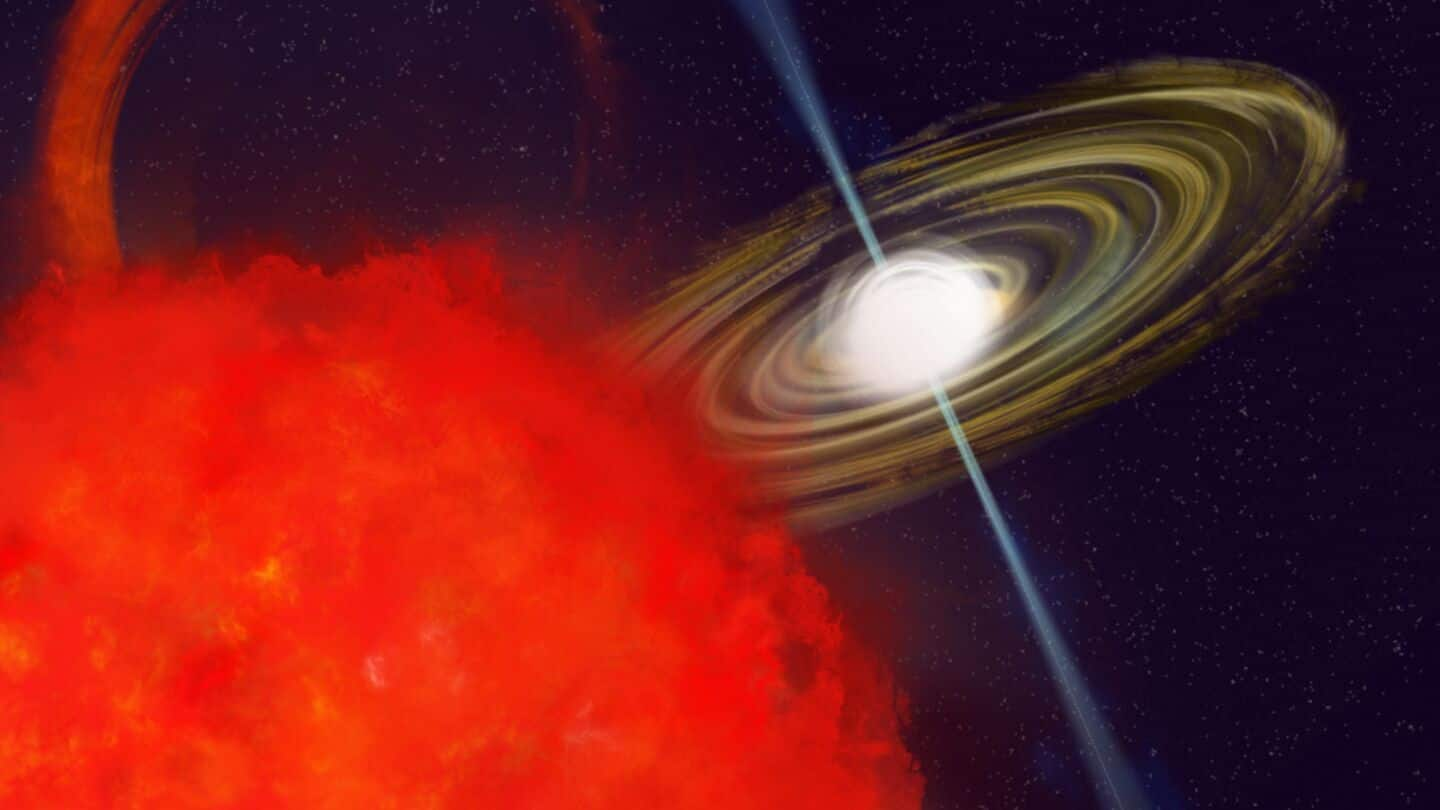
This celestial object challenges our understanding of spinning dead stars
What's the story
Astronomers have discovered a rare and strange celestial object, dubbed a "cosmic unicorn." The discovery was made using advanced radio telescopes around the world. The unique characteristics of this object, called CHIME J1634+44, challenge our present understanding of spinning dead stars, including pulsars and their environments. Pulsars are rapidly spinning neutron stars that emit beams of radiation across the cosmos as they spin.
Unusual characteristics
What are LPRTs?
CHIME J1634+44, also called ILT J163430+445010 (J1634+44), belongs to a newly discovered class of celestial objects called Long Period Radio Transients (LPTs). LPTs are strange cosmic bodies that emit bursts of radio waves on timescales of minutes to hours. This is much longer than the emission periods of regular pulsars. CHIME J1634+44 is not just the brightest LPT ever seen but also the most polarized one.
Unprecedented behavior
CHIME J1634+44 is the only speeding up LPT
The radiation pulses from CHIME J1634+44 are highly choreographed, with a secondary period of 4,206 seconds (70 minutes), which is five times longer than the primary one. This suggests that the object may be a binary system with something orbiting a neutron star. Unlike other LPTs, CHIME J1634+44 is also the only one known to be speeding up its spin.
Spin mystery
Why the spin acceleration is puzzling
The spin acceleration of CHIME J1634+44 is a major puzzle. Neutron stars and white dwarfs usually slow down as they lose energy over time. However, the teams studying this object suspect it could be a binary system with another stellar remnant (such as a white dwarf or neutron star) or a "failed star" brown dwarf as its companion. This could explain the unusual behavior of the cosmic unicorn.
Radio emissions
Unusual properties of radio bursts from CHIME J1634+44
The radio bursts from CHIME J1634+44 are 100% circularly polarized, meaning the electromagnetic waves escaping the object rotate in a circle as they propagate. This is extremely rare and has never been observed in radiation bursts from neutron stars or white dwarfs. The pulses arrive in pairs but only after the star has spun several times without emitting a burst, hinting at a possible connection between its spin and emission patterns.
Discovery impact
Discovery challenges existing models of neutron stars
The discovery of CHIME J1634+44 not only adds to the known population of LPTs but also challenges our models of neutron stars and white dwarfs. It suggests there could be many more such objects. The research was published in the journal Astronomy & Astrophysics.